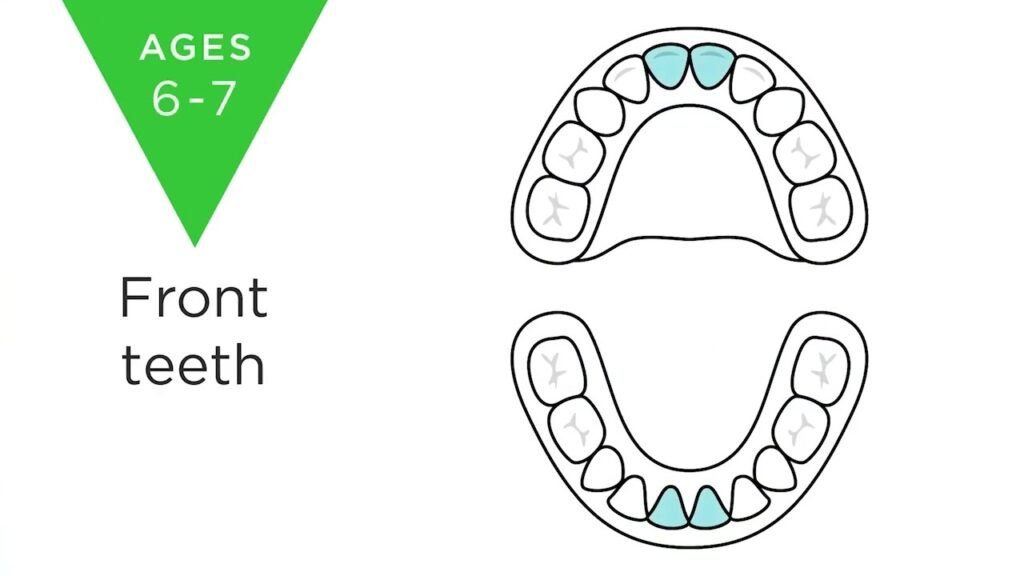The Timeline of Children Losing their Molars

When do kids lose their molars? The loss of baby teeth is a natural and exciting part of childhood development. As children grow, their jaws expand, making room for their permanent teeth to come in. The process of losing molars typically begins around the age of 10 and continues until the age of 12. This transition can sometimes be accompanied by discomfort or sensitivity, but it is an important milestone in a child's oral health journey. In this article, we will explore when and why kids lose their molars, as well as how parents can support their children through this stage of growth.
Do children's back molars fall out?
Yes, children's back molars do fall out, but they are eventually replaced by premolars. These bicuspids have two points and are followed by two sets of full molars, including the wisdom teeth. It's important to monitor the growth and development of your child's teeth to ensure proper dental care.
As your child grows, their teeth will go through a natural process of falling out and being replaced. The back molars are no exception, as they will be replaced by bicuspids and later by full molars. By understanding this dental timeline, you can help your child maintain a healthy smile and promote good oral hygiene habits from a young age.
What age does a child lose molars?
Children typically begin to lose their baby teeth around the age of 6 or 7, starting with the front teeth known as the incisors. The process continues over several years, with the molars being the last to fall out. The first molars are usually lost around 9-11 years old, followed by the second molars at 10-12 years old.
It is important for parents to monitor their child's dental development and make sure they are practicing good oral hygiene habits. Regular dental check-ups can help track the progress of tooth loss and ensure that the permanent teeth are coming in properly. By understanding the timeline for losing baby teeth, parents can better prepare their child for this natural and necessary stage of growth.
As children reach the age of losing their molars, it is crucial to educate them about the importance of taking care of their permanent teeth. Proper brushing, flossing, and regular dental visits are key to maintaining good oral health throughout their lives. By following the timeline for losing baby teeth and instilling healthy habits early on, children can enjoy a lifetime of strong and healthy teeth.
Are baby teeth replaced by 12 year molars?
Around the age of 12, children typically have all of their permanent teeth except for their wisdom teeth. While baby teeth are eventually replaced by permanent teeth, they play a crucial role in guiding the permanent teeth into their correct positions and aiding in the proper development of the jaw.
From Baby Teeth to Big Smiles: A Journey Through Childhood Molar Loss
Embarking on the journey from baby teeth to big smiles is an exciting and transformative experience for children as they navigate the loss of their childhood molars. From the initial wiggles of loose teeth to the joy of a tooth fairy visit, each milestone marks a step towards growing up and embracing their new, adult smile. As parents guide their little ones through this natural process, they witness the resilience and adaptability of their children, who bravely face the bittersweet transition from babyhood to the next stage of childhood.
Growing Up and Gaining Gaps: Exploring the Timeline of Children's Molar Milestones
As children grow, so do their smiles. The timeline of children's molar milestones is an important aspect of their development, as it can provide insights into their overall health and well-being. From the eruption of their first molars to the loss of their baby teeth, each stage represents a significant milestone in their dental journey.
The first set of molars typically erupt around the age of 6, marking an important transition in a child's dental development. These primary molars play a crucial role in chewing and maintaining proper alignment of the teeth. As children continue to grow, they will eventually lose these primary molars and make way for their permanent replacements. This process, known as exfoliation, usually occurs between the ages of 10 and 12, signifying another milestone in their dental timeline.
Understanding the timeline of children's molar milestones is essential for parents and caregivers to ensure that their children receive proper dental care at each stage of development. By monitoring the eruption and exfoliation of their molars, parents can help maintain their children's oral health and address any concerns that may arise. Ultimately, exploring the timeline of children's molar milestones provides valuable insights into their growth and development, allowing for proactive and preventative dental care.
As parents, it is important to be aware of the typical timeline for when children lose their molars. By understanding that most kids lose their primary molars between the ages of 9 and 12, we can better anticipate and prepare for this natural process. Remember to encourage good oral hygiene habits and regular dental check-ups to ensure a smooth transition for your child as they grow and develop.